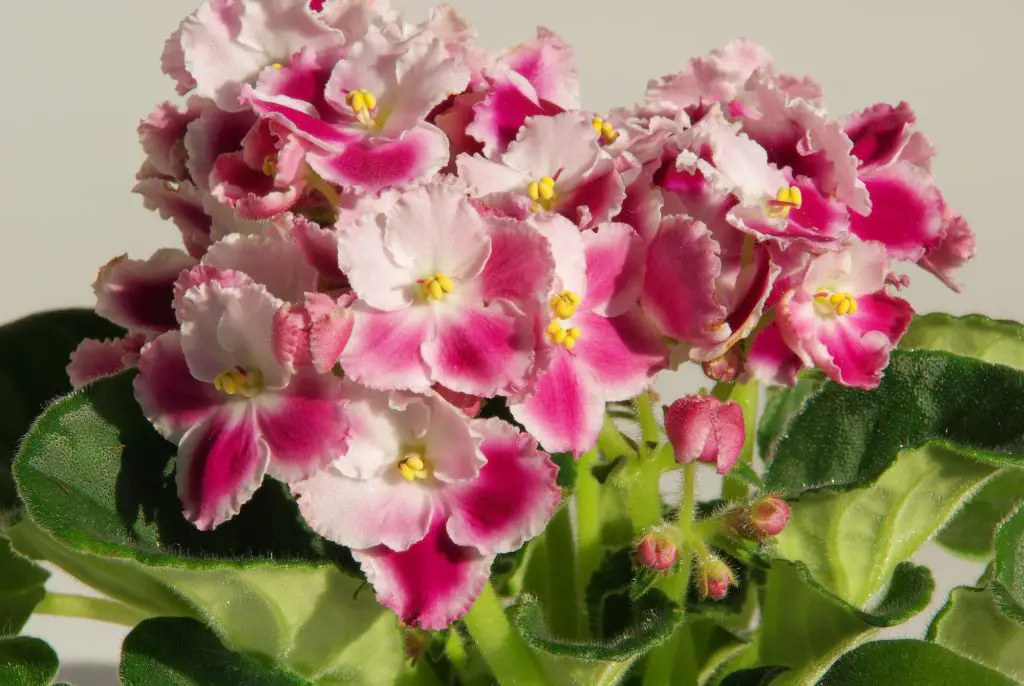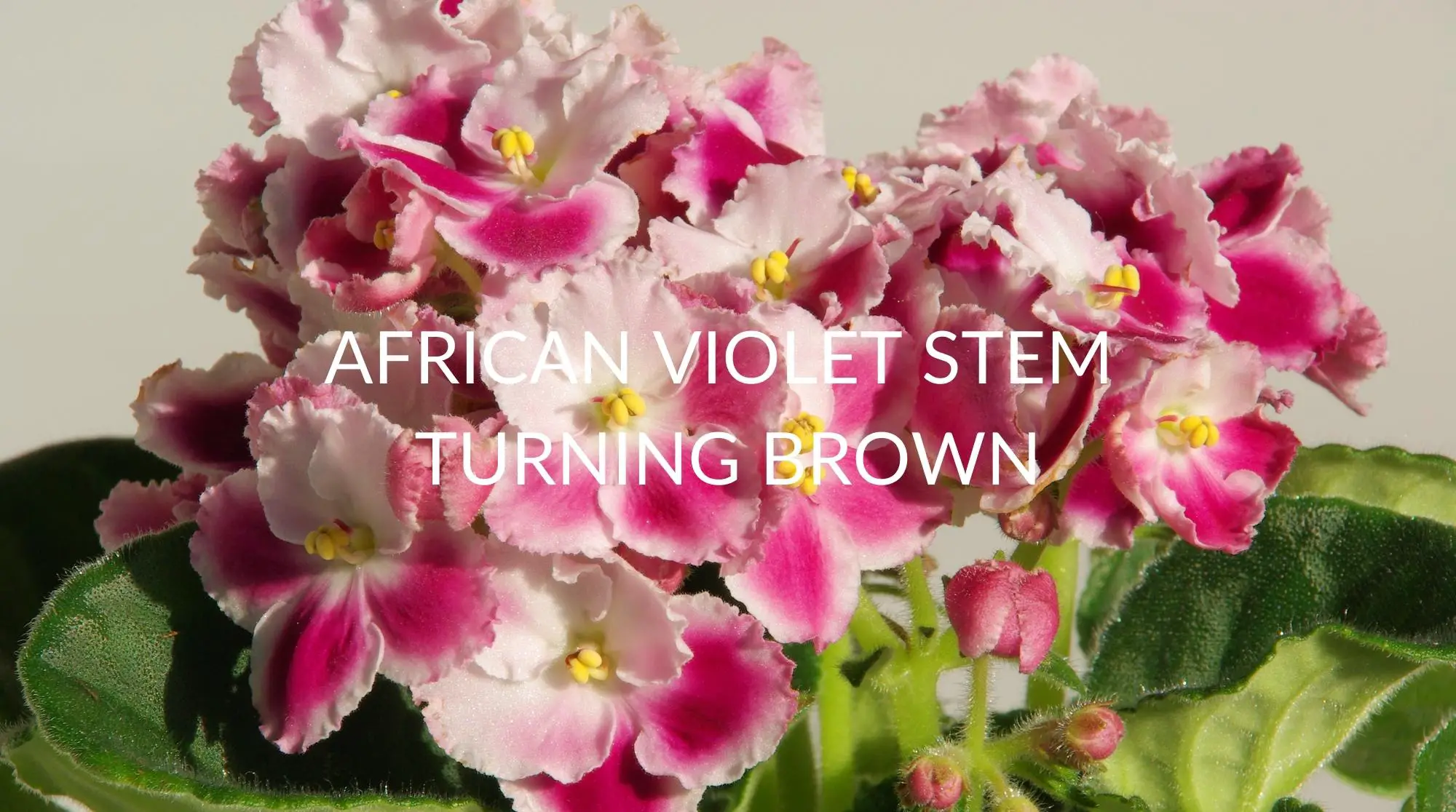African violets are exquisite indoor plants that are popularly known for their vividly colored flowers, fuzzy leaves, and their ability to brighten up any room they are in. These perennial plants are low-maintenance and easy to grow.
However, this doesn’t mean that you won’t experience problems with African Violets. Just like any other plant, they can be vulnerable to issues. So, in this article, we will discuss one of them: When your African Violet’s stems are turning brown. Aside from the causes, we’ll also tackle what you can do when this happens to you. So, keep reading!
Why Are My African Violet Stems Turning Brown?
Your African violet is made up of four main parts: the flowers, leaves, roots, and stems. Each of these parts has a vital role in keeping your African Violet healthy. The stem has a crucial responsibility of supporting and transporting water, nutrients, and minerals to the leaves. So, when you notice that your stems are turning brown, it is important to know the possible causes.
At the onset of symptoms, you may start noticing that your stem is turning brown from its base going upward. The base of the stem will turn mushy brown or black. The affected stem can either be the plant’s main stem or the little stalks connecting the leaves from the main stem called the Petioles.
So, why are your African Violet’s stems or petioles turning brown? There could be several possible reasons for this.
Petiole Rot
There are times where even with proper care and maintenance of your plant, they can still develop such problems, like Petiole Rot. As the name suggests, Petiole rot happens in the petiole and is usually characterized by rusty brown spots appearing on your petioles. This is caused by the build of fertilizer salts on your pot’s rims.
Fungus Infection
Your African Violet’s stems may also turn brown due to a fungus infection called Botrytis Blight. If left untreated, this can lead to a case of stem rot. The type of Fungus that causes Botrytis Blight is the Botrytis cinerea. Aside from the stems turning gray, you may also notice the flowers losing their color, as well as stunted growth.

Root and Stem Rot
Root rot usually occurs when you overwater your African Violets, which suffocates the roots. When your plant gets waterlogged, your roots won’t be able to do their job in absorbing the nutrients, minerals, and oxygen your plant needs to survive. This leads to a bad case of Root rot and could eventually infect the stem leading to stem rot.
Here are signs to look out for if you suspect that your plant is suffering from root and stem rot:
- Crown and Stem Turning Brown
- Yellowish Leaves
- Foul Smell Coming From the Roots
- Stunted Plant Growth
- Black or Brown Mushy Roots
If you see your African Violets showing any of the symptoms above, it’s time to take action.
How To Treat African Violet Stems That Turned Brown
The treatments for your African Violet stems that turned brown vary depending on the cause. It is a race against time, as these signs can take place in days or weeks. If you don’t act swiftly, it might be too late for your African violets to survive. But don’t worry! Applying these tips right away means that you’ll have a higher chance of saving your African Violets:
Treatment for Petiole Rot
To treat a simple case of Petiole rot, you need to take extra measures when feeding fertilizers to your African Violet. Instead of using a generic fertilizer, use special water-soluble fertilizers
with low salt content designed for your African Violet. Instead of pouring the fertilizer directly to your plant, dissolve 1/4 teaspoon of your fertilizer in a gallon of water; then use this to water your African violet.
Avoid tap water for your plant as they contain chlorine which can be damaging to your African Violet. Instead, use rainwater or filtered water. By applying this, you can slowly see your petioles returning to their normal color.
Treatment for Fungus Infection
For Fungus Infection, the treatment and the survival rate of your plant depend on the progression of the disease. If the disease has already spread to the whole plant, it’s too late to save your African Violet. However, at the onset of the symptoms, it is still possible to treat the infection with fungicide.
Remember the importance of isolating the infected plant from the healthy ones. Use Captan or Benomyl for the unaffected plants.
Treatment for Root and Stem Rot
Time is also crucial when it comes to reviving your African Violet’s root and stem rot. Remove your plant from the soil and carefully wash the stems. Afterward, trim the affected parts of the roots and leaves.
The last step is to repot your African Violet with fresh soil. It is absolutely important to do this to remove the fungus bacteria buildup in your old soil. It will also resupply the lost nutrients and minerals that have been lost when your plant became waterlogged. Most importantly, it gives your African Violet a chance to recover from the stress that it has experienced.
Wondering why you have a leggy African Violet? Find out why and what to do about it!
How To Prevent African Violet Stems From Turning Brown
Preventing your African Violet from developing brown stems is still the best way to ensure its health. Although the causes vary, general preventive measures still apply.
- Avoid overwatering your African Violet. Give water to your plant only after 1/3 of the soil has dried up.
- Make sure that your African Violets have good drainage by putting them in pots with holes at the bottom.
- Let your plants receive enough indirect sunlight during the day, but do not expose them to harsh direct sun rays.
- To avoid Petiole rot and fungal infection, use specialized dissolved fertilizer to make your Afrian Violets healthier without compromising its stems.
- Clean your plant’s leaves and stems every once in a while to prevent dust,fertilizer or debris buildup on the surface.
Conclusion
Your African Violets need your tender loving care. Although they are low-maintenance plants, they still need our attention every once in a while to keep their optimum health. If you notice any parts of your African Violet turning brown, it’s best to take action as soon as possible to prevent further damage. But then again, prevention is always better than cure. By applying the helpful tips we have learned today, you can be sure that your African Violet’s going to be healthy and happy!
If you liked this article, make sure you check out the rest of the website! Otherwise, have a great day!








